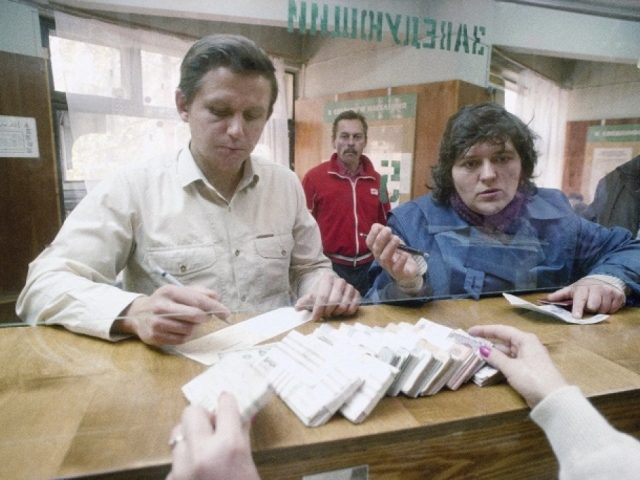
Immediately after the introduction of the floating exchange rate in the Russian Federation, on Jule 1, 1992, the Bank of Russia equalized the official rate of the American national currency with the stock price. So, in an instant, the value of the dollar against the ruble increased by 222 times — from 56 kopecks to 125 rubles.
In the picture: Moscow people are changing dollars into rubles in a local bank in 1992.
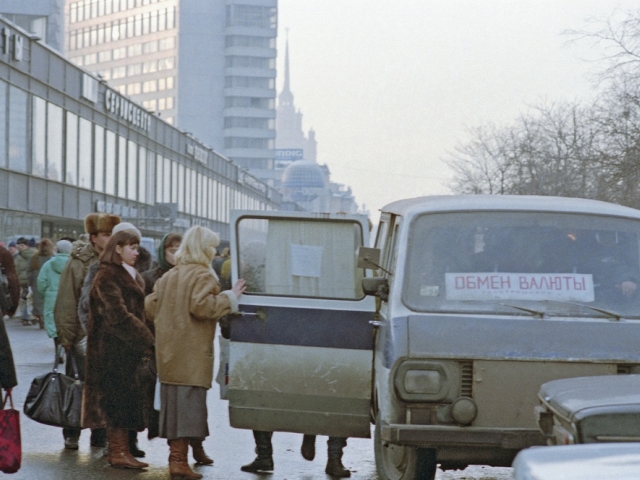
In August 1992, the official value of the Russian currency fell by 22% against the US dollar - from 168.1 to 205 rubles/$. The representatives of the Bank of Russia reported that the drop was caused by demand, which prevailed over the offer.
In the picture: people are trying to exchange money at a mobile foreign exchange bureau on New Arbat Street in September 1993. The exchange-value of the ruble at that time dropped by 25% against the dollar, the value of which was equal to 1299 rubles.
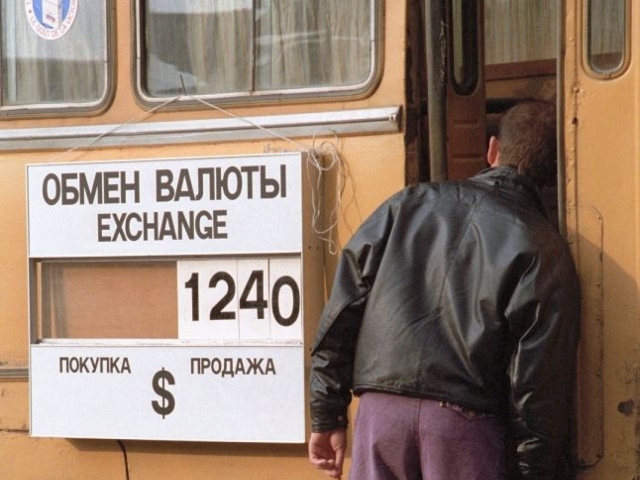
In autumn 1993, political instability was observed in the country — the President Boris Yeltsin signed a decree on the stage-by-stage constitutional reform in the Russian Federation, which enacted the Congress of People's Deputies and the Supreme Soviet to stop their activities.
In the picture: a mobile foreign exchange bureau near the Prague restaurant, 1993.
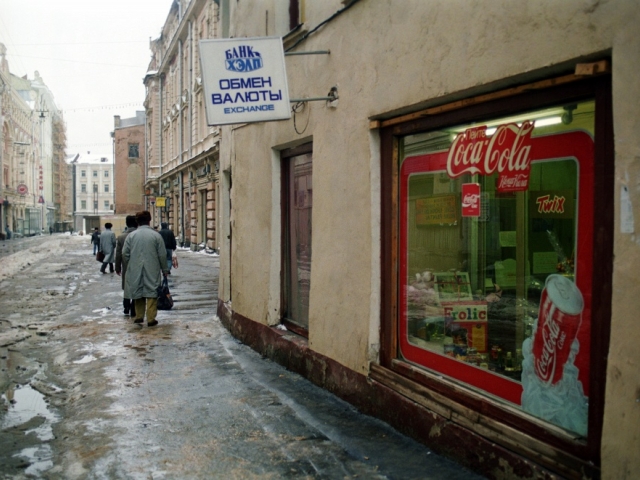
In October 1994, another depreciation of the ruble was registered. In a day, the American dollar exchange rate climbed almost by 39%, from 2833 to 3926 rubles. However, the fall of the Russian currency did not last long — already in 3 days the dollar's value against the ruble stopped at 2994 rubles.
In the picture: an exchange office in Stoleshnikov Lane, Moscow, 1994.

It is noted that from July 1, 1992 and until the denomination that occurred on January 1, 1998, the Russian ruble managed to depreciate 47 times — from 125 to 5960 rubles.
In the picture: the line for the "favorable" dollar at one of the currency exchange offices in Moscow in 1995.
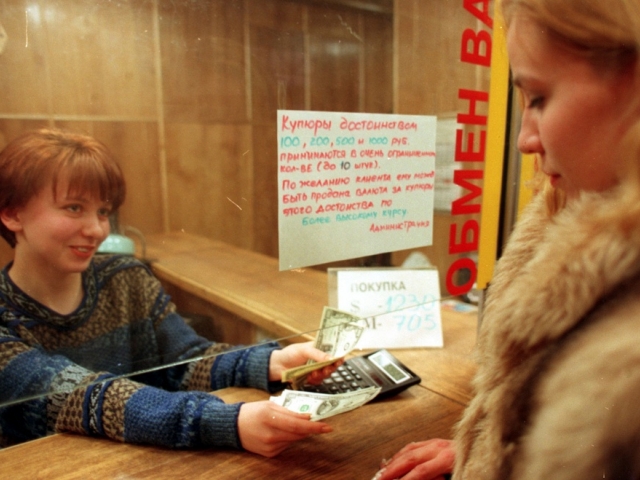
The Russian Federation's Goskomstat announced that residents of Russia spent more than one fifth of all the profits on foreign currency purchases in the 1990s. It is explained that during the period from January to April 1997, Russians purchased currencies totalling 107.6 trillion rubles.
In the picture: exchange of currency in the Vostokstroibank commercial bank in the capital, 1997.
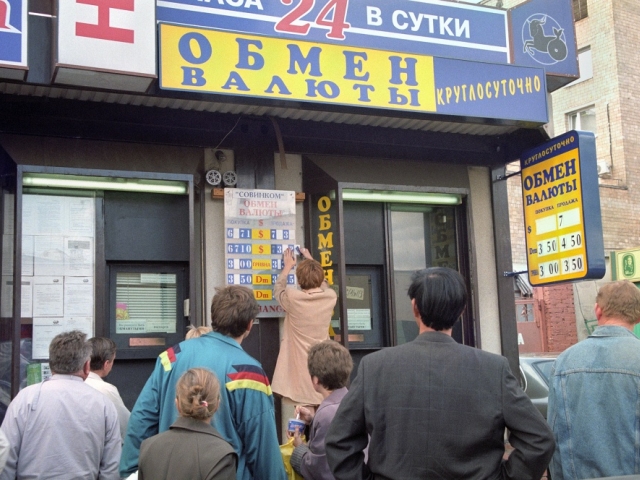
On August 1998, the Government of the country announced the technical default on the main types of public debt.
In the picture: residents of Moscow are closely monitoring volatility of the ruble exchange rate, 1998.
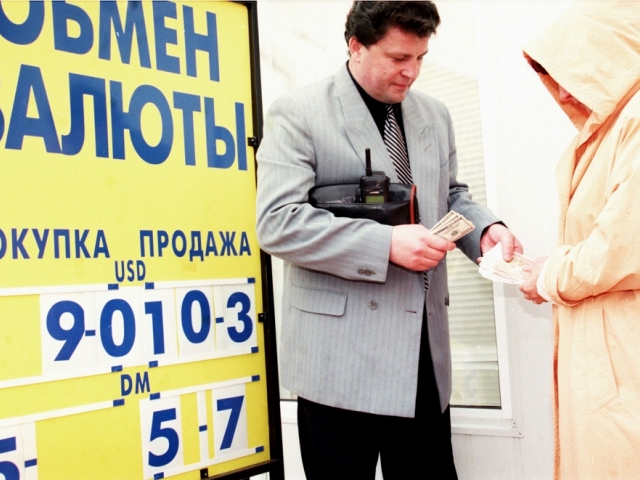
At that moment the authority of the state did not keep the fixed rate of the ruble against the US currency. The Government announced the transition to the floating rate in terms of the new currency corridor, the borders of which were markedly moved.
In the picture: a money changer in one of the streets of the Kievsky Station of Moscow, 1998.
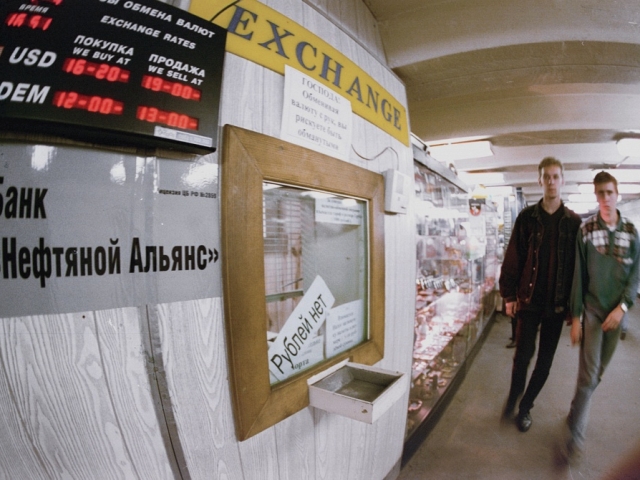
That year, from August 18 to September 9, the US currency increased in relation to the ruble by 3.2 times — from 6.50 to 20.83 rubles. The fall of the domestic currency was followed by its strengthening to 8.67 rubles.
In the picture: a currency exchange office in the undergrung crossing in the capital Arbat, 1998.
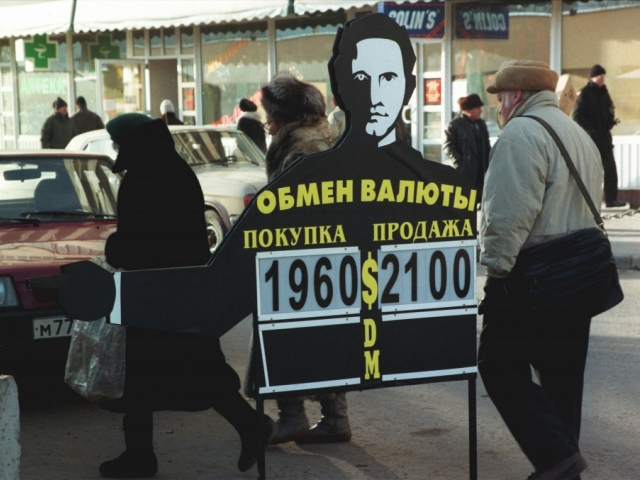
Experts explained that the economic crisis and depreciation of the Russian ruble occurred due to the artificial strengthening of the ruble in order to reduce inflation. In addition, the domestic currency's decline was affected by the crisis in the countries of South-East Asia and the fall in the global cost of energy.
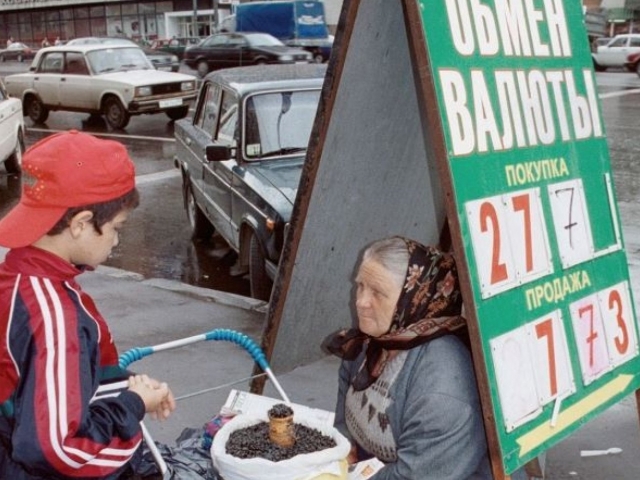
After the default of 1998, the ruble had been declining for the next 4 years. In December 2002, the Central Bank of Russia estimated the dollar at 31.86 rubles. It is noted that over the 4-year period the ruble depreciated against the dollar by about 5 times. After 2002, the rate began going down and held steady until 2008.
In the picture: an exchange office in 2000.
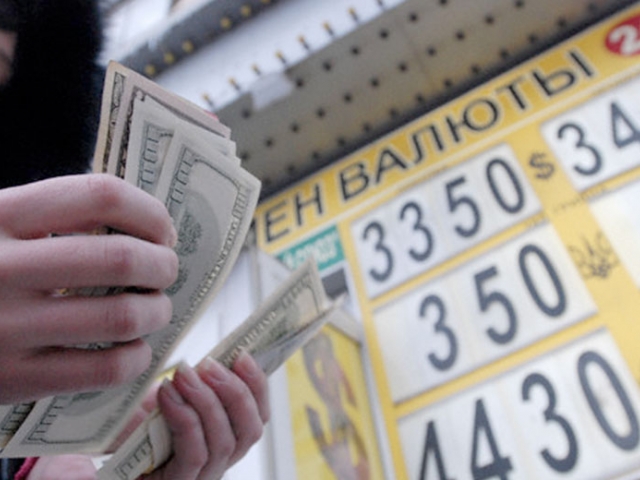
In 2008 the ruble began losing momentum due to the global financial crisis.
In the picture: an exchange rate in one of the exchange offices, Moscow, 2008.
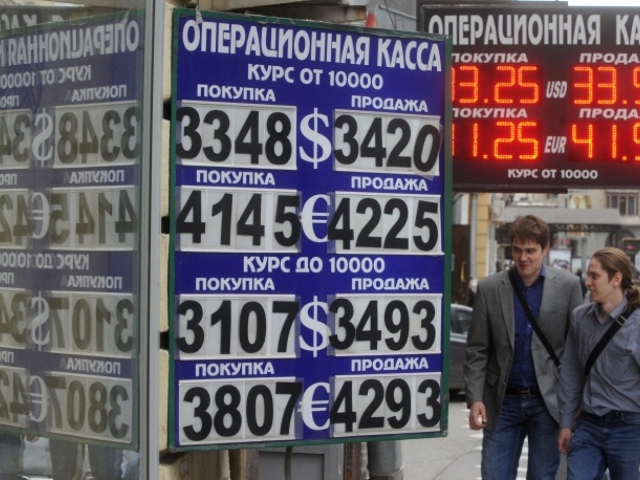
It is noted that at that time the domestic currency depreciation was affected by the fall in the world oil prices. In addition, the CB policy was aimed at weakening of the ruble to the bicurrency basket.
In the picture: an exchange office, Moscow, 2012.
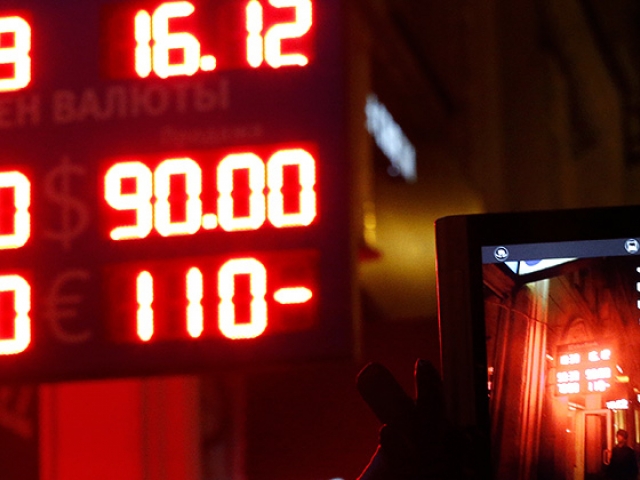
In December of the last year, the exchange rate of the domestic currency fell to its historical lows — 80.1 rubles/$ and 100.74 rubles/€. It is noted that at that time the market was really in a panic. The ruble dipped further despite the Central Bank's increase in the key interest rate.
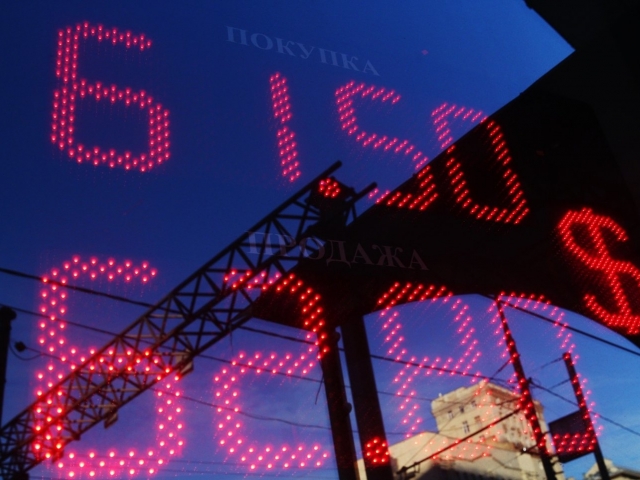
In January 2015, the Central Bank of Russia reduced the key interest rate from 17% to 15%. It is registered that that was one of the reasons for the repeated weakening of the ruble. The greatest decline of the Russian currency peaked in the beginning of February — then the Central Bank of Russia kept the dollar exchange rate at 69.66 rubles and the euro exchange rate — 78.79 rubles. In late February, the ruble strengthened by about about 3%.

The growth peak of the Russian ruble occurred in the middle of spring. So, on April 17 amid fears of investors due to the economic crisis in Greece, the euro had fallen by 22% to 52.9 rubles since the beginning of the year. The dollar had stopped at about 49.18 rubles demonstrating a decline by 12.5% since the beginning of the year.
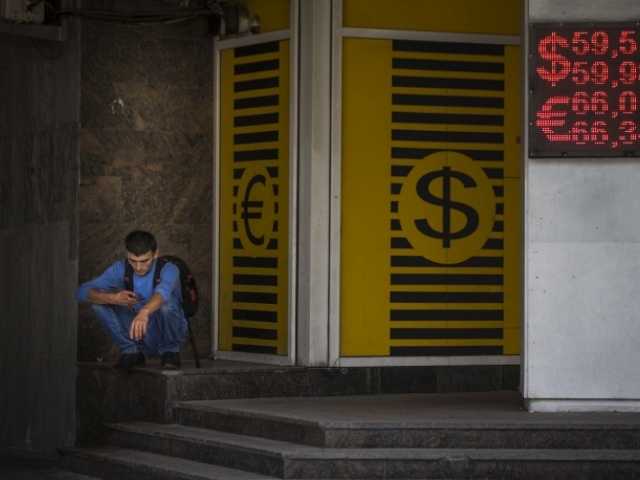
In early summer, due to the fragile situation in Ukraine, the value of foreign currencies went up. In July, in view of the drop in oil prices, the Russian currency began falling in price. To date, the stock exchange rate of the dollar is 60.36 rubles, the euro — 66.11 rubles.
 Български
Български 
 Русский
Русский English
English Bahasa Indonesia
Bahasa Indonesia Bahasa Malay
Bahasa Malay ไทย
ไทย Español
Español Deutsch
Deutsch Français
Français Tiếng Việt
Tiếng Việt 中文
中文 বাংলা
বাংলা हिन्दी
हिन्दी Čeština
Čeština Українська
Українська Română
Română
